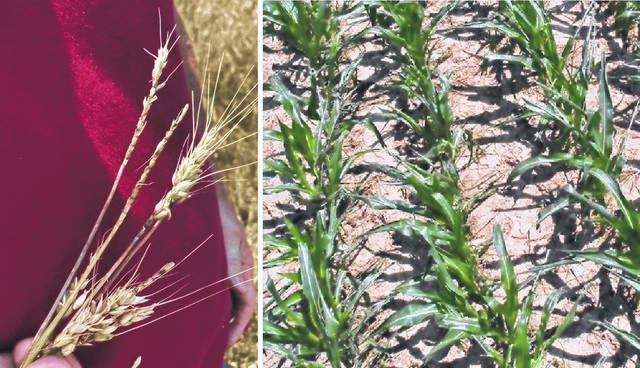

Well, is the glass half-full or half-empty when we think of the recent weather?
My guess it just depends on who you talk to this week after all the rain. Parts of county have had more than plenty, and then there are others that are tickled pink for what they got.
Welcome to the challenges of Mother Nature and agriculture.
Kaitlin Roush, Clinton County Director for the Farm Service Agency, wants to remind Clinton County farmers if you experience a loss on your farm, don’t forget to report it to the FSA office. We must be made aware within 15 days of the disaster or when the loss is first apparent.
We are also quickly approaching the deadline to report crops. The last day to report any spring planted crops is July 15, including double crops. She asks that producers please call and set up an appointment, as soon as possible to report your crops. You can reach their office by calling (937) 382-2315.
Regarding damaged crops, the results of the storm on June 18 — hail, excessive wind and plenty of rain — have become clearer as to the amount of crop damage producers experienced.
Some isolated fields received enough storm damage that soybeans have been replanted and even some wheat will be a complete loss due to the fact the hail literally knocked the kernels of grain right onto the ground.
Corn on the other hand has recovered very well and by next week it will be very difficult to know it was riddled and torn up by the storm.
In other areas of the county where too much rain continues to fall (up to 5 or more inches this week), recently planted soybeans (last 3 weeks) have struggled due to excessive moisture. There is a rumor some fields have already had spots replanted 3 or 4 times.
CORN Live
This week I wanted to highlight a new webinar series called CORN Live which will be offered throughout the growing season to address timely issues related to agronomic crop production and management as they emerge.
Join the OSU Agronomics team this Thursday, July 8 from 8-9 a.m.; it is free to attend. Register at www.go.osu.edu/cornlive . One hour of CCA CEUs will be offered.
Topics for this next CORN Live session will include discussion on corn diseases and fungicides. Yours truly will also be a guest on the program giving an update of the crop conditions here in Clinton County.
Pollinators
Finally, I want to acknowledge this past week we celebrated National Pollinator Week.
We think of pollinators many times as just managed honeybees, but actually there are 4,000 species of wild native bees in the U.S. that provide pollination. Native bees can be divided into three broad categories: solitary ground-nesting (mining bee), solitary wood or tunnel-nesting (leaf cutting bees), and our one group of native cavity social bees, the bumblebee.
Native bees alone contribute $3 billion a year to the national economy through pollinating such crops as strawberries, cantaloupe, blackberries, blueberries, and sunflowers.
In fact, more than 1,000 of all pollinators are vertebrates such as birds, bats, and small mammals. Most pollinators (more than 200,000 species) are beneficial insects such as flies, beetles, wasps, ants, butterflies, moths and bees.
Did you know these facts about pollinators?
• In the U.S., pollination produces nearly $20 billion worth of products annually.
• Monarch butterflies have declined by 90% in the last 20 years.
• 25% of bumblebee species are thought to be in serious decline.
For more information, check out these websites: Pollinator Partnership at pollinator.org and The Ohio State University Bee Lab at beelab.osu.edu .
Tony Nye is the state coordinator for the Ohio State University Extension Small Farm Program and has been an OSU Extension Educator for agriculture and natural resources for over 30 years, currently serving Clinton County and the Miami Valley EERA.



